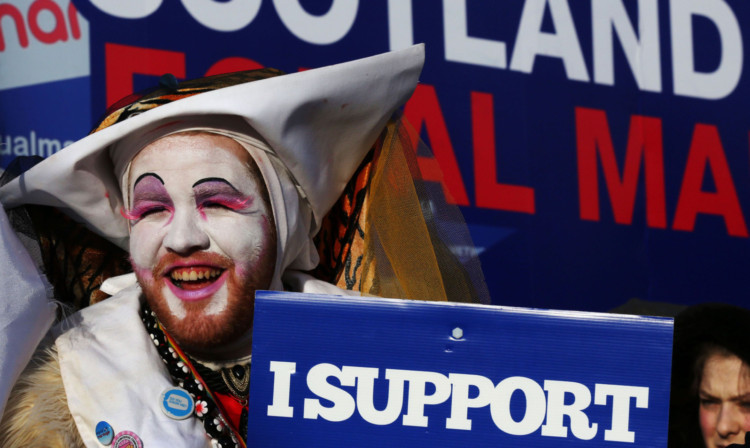Scotland took its first parliamentary step to legalising same-sex marriage when MSPs voted to back a Bill at Holyrood.
Health secretary Alex Neil said the change to the law will make Scotland a more civilised society.
Both the Church of Scotland and the Catholic Church oppose the Bill, and some local MSPs also spoke out against it.
Three ministers also voted against it Roseanna Cunningham, Alasdair Allan and Fergus Ewing.
North East Scotland Conservative MSP Alex Johnstone said the Scottish Government should be focusing on other priorities, but urged tolerance on all sides of the debate.
Angus North and Mearns MSP Nigel Don also spoke against the motion, focusing on religion as his reason.
He clashed with fellow SNP member, Dundee City West MSP Joe FitzPatrick, who called on Mr Don to acknowledge the law currently “discriminates against me and other LGBT people”.
The Marriage and Civil Partnership (Scotland) Bill covers the following matters relating to marriage law:
* The introduction of same-sex marriage.
* Putting belief celebrants on the same footing as religious celebrants.
* The arrangements for authorising celebrants to solemnise opposite sex and same sex marriage.
* Civil partnerships changing to marriage.
* The authorisation of Church of Scotland deacons to solemnise opposite sex marriage.
* Allowing civil marriage ceremonies in any place agreed between the couple and the registrar, other than religious premises.
It also allows married transgender people to obtain full gender recognition without a requirement to divorce.
Mr Neil said the legislation “makes some sensible improvements to marriage and civil partnership law”, but did this “while respecting the views of those who do not want to take part”.
The Scottish Government insists the Bill will protect the rights of religious celebrants and groups who are opposed to allowing gay couples to wed.
Under the plans, religious bodies would have to opt in to perform same-sex marriage ceremonies.
If a religious group does decide to do this, protection will also be offered to individual celebrants who feel it would go against their personal faith.
Conservative leader Ruth Davidson said: “Presiding Officer, from childhood you’ve known without even thinking that if you found someone you loved and who loved you in return, you had the right to marry them.
“That same unthinking right to marry is extended to the Cabinet Secretary. The leader of the Labour Party has that right also so too does the leader of the Liberal Democrats.
“I want that right to extend not just to me, but also to the thousands of people across Scotland who are told that the law says no.”
Labour’s Elaine Smith said she plans to vote against the Bill, stating it would have “consequences which would have a detrimental impact on our fragile society”.
SNP member John Mason said he would also vote against the Bill, adding parliament was “not reflecting public opinion on this issue”.
